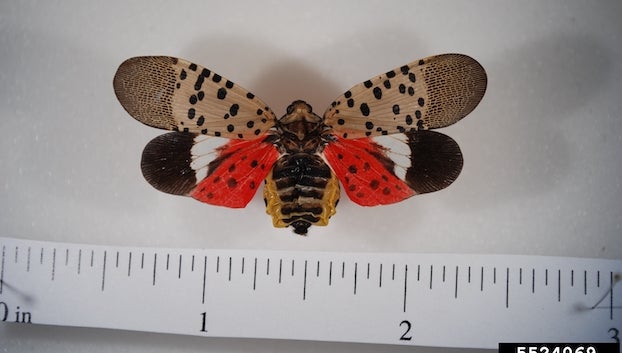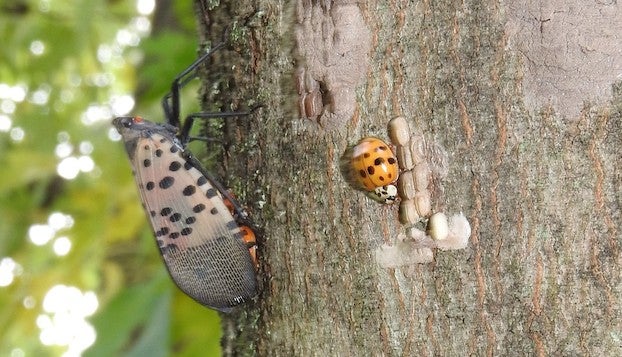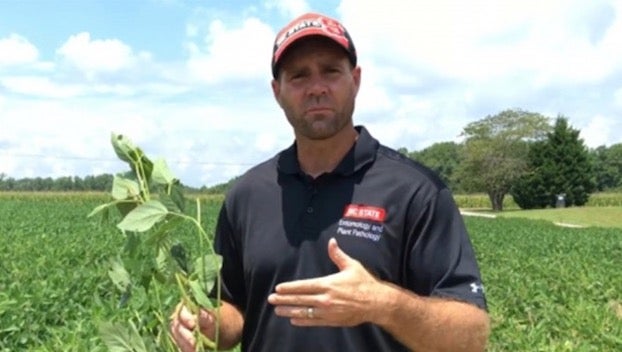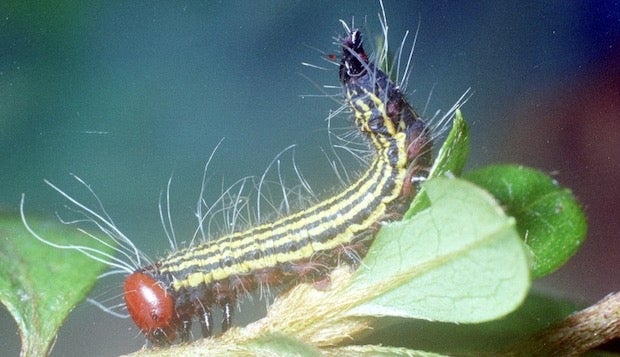Spotted Lanternfly confirmed in North Carolina
Published 4:54 pm Wednesday, July 20, 2022
|
Getting your Trinity Audio player ready...
|
Most of us tend to save our vacation time for summer travel and fun. My family usually spends time at the beach and visiting family up and down the East Coast. It is fun to me, being a plant geek, to see the difference climate can make on what plants grow where. As you travel the interstates from place to place, take a minute to learn the trees you see along the highways and byways.
This week I took a trip to Williamsburg, Va. For the North Carolina Seedman’s Convention. I had a chance to walk through Colonial Williamsburg and really look at all of the gardens and trees growing there. One of the great aspects of being in an area such as this is that all of the trees are maintained properly. As a side note, the names, common and scientific, are also listed on nearly every tree along the sidewalk. So of course, much to the chagrin of my wife walking beside me, I quizzed myself on nearly every tree.
There was one that I am certain would have rivaled the Angel Oak in South Carolina. I walked up to it to admire the low-hanging branches of this beautiful Live Oak but I learned that it was not a live oak at all. Upon closer inspection, the leaves were wrong. It was a hybrid called Compton Oak, Quercus x comptonae. Of course, I had to know who this hybrid’s parents were so I did some research. Turns out, it is a cross between an overcup oak (Q. lyrata) and a live oak (Q. virginiana). When looking this species up on our Extension Gardener Plant Toolbox, there were two pictures of the tree I actually saw in Colonial Williamsburg.
We can see all kinds of different plants along the highways as we travel. We can encounter people from everywhere when we travel too, we even saw a license plate from Oregon. If we have people from Oregon on highway 95, I’m certain they have people from North Carolina. This is what makes it so important to know about pests as well, especially when we travel. This is one of the easiest ways for us to spread unwanted pests from place to place.
One of the biggest pest issues in the horticultural world recently has been the invasive, exotic, spotted lanternfly. This pest was introduced in Pennsylvania through imported Chinese stone tiles in 2014. The egg masses were on the tiles and went undetected until they had hatched. Unfortunately, this happens all too often.
This insect has been extremely prolific since its introduction. It is a piercing/sucking pest that feeds on the sap of trees. They have mouthparts similar to mosquitoes called a proboscis that they inject into the tree to feed on the sugary sap. As such, they emit a very sugary substance called honeydew. This is similar to pests such as aphids and lacewings. The spotted lanternfly emits so much honeydew that it looks as though it is raining sap under an infested tree. The honeydew is an attractant to other unwanted guests such as ants and wasps. A fungus, called sooty mold, is a secondary pest of the honeydew. Aptly named sooty mold because it turns everything black from propane tanks to houses to leaves of other plants. Sooty mold can be washed off however using dish soap and a little elbow grease.
The spotted lanternfly feeds upon many species of trees, over 100 have been identified thus far. Plants from hops to fruit trees to ornamentals can be affected. However, the pest really seems to prefer the Tree-of-Heaven (Ailanthus altissima), so much so, that it is thought this could be a possible host species for the spotted lanternfly. The problem here is that the tree-of-heaven, an exotic, invasive species as well, is everywhere. This tree is an invader of rights-of-ways and early secessional field borders. The leaf and growth pattern closely resemble that of sumac and from a distance could be mistaken for walnut or pecan. Tree-of-heaven is currently developing its seeds and can be distinguished very easily from a distance right now. As we drove the highways this past weekend I was alarmed at the sheer numbers of tree-of-heaven that dotted the road side, there were thousands. NCDA&CS has been tracking this pest for some time and came out with a campaign to educate the public in 2019.
The Spotted Lanternfly has now been confirmed in Kernersville, NC. Although not that close to us, it is important to keep an eye for this pest. I have actually had two calls this year from folks that thought they had a lanternfly in their yards. They were both false identifications but stay on the lookout.
There are several Pennsylvania counties currently under quarantine to try to stop the spread of the spotted lanternfly but this is a difficult thing to accomplish. The second concern for the spread of this pest is their preference for laying egg masses on rusty metal. I mentioned earlier the number of different license plates we saw from across the country and even into Canada. This includes cars and semi-trucks alike, all of which have some rusty metal. I also mentioned how prolific tree-of-heaven is in rights-of-ways, this includes railroads! Rusty metal on railcars and tree-of-heaven along the railroads makes this a perfect storm for spreading this pest not only South, but across the country.
If you feel you have seen this pest, take a picture, including a point of reference for size (such as a pen or coin), and send it to badbug@ncagr.gov. More information can be found on this pest by visiting this NCSU Resource website: https://gardening.ces.ncsu.edu/spotted-lanternfly-resource-page/. If you are traveling to New Jersey or Pennsylvania this summer, make sure to know and understand how to identify the pest and its eggs so that you don’t bring an unwanted stowaway back home with you.
If you have a question to submit, please email to Gene Fox at gene_fox@ncsu.edu. Having trouble with growing in your home landscape, call the Extension office and speak to an Extension Master Gardener VolunteerTM (EMGV’s), Mondays and Wednesdays between 10:00 and 12:00 at (252)946-0111.







